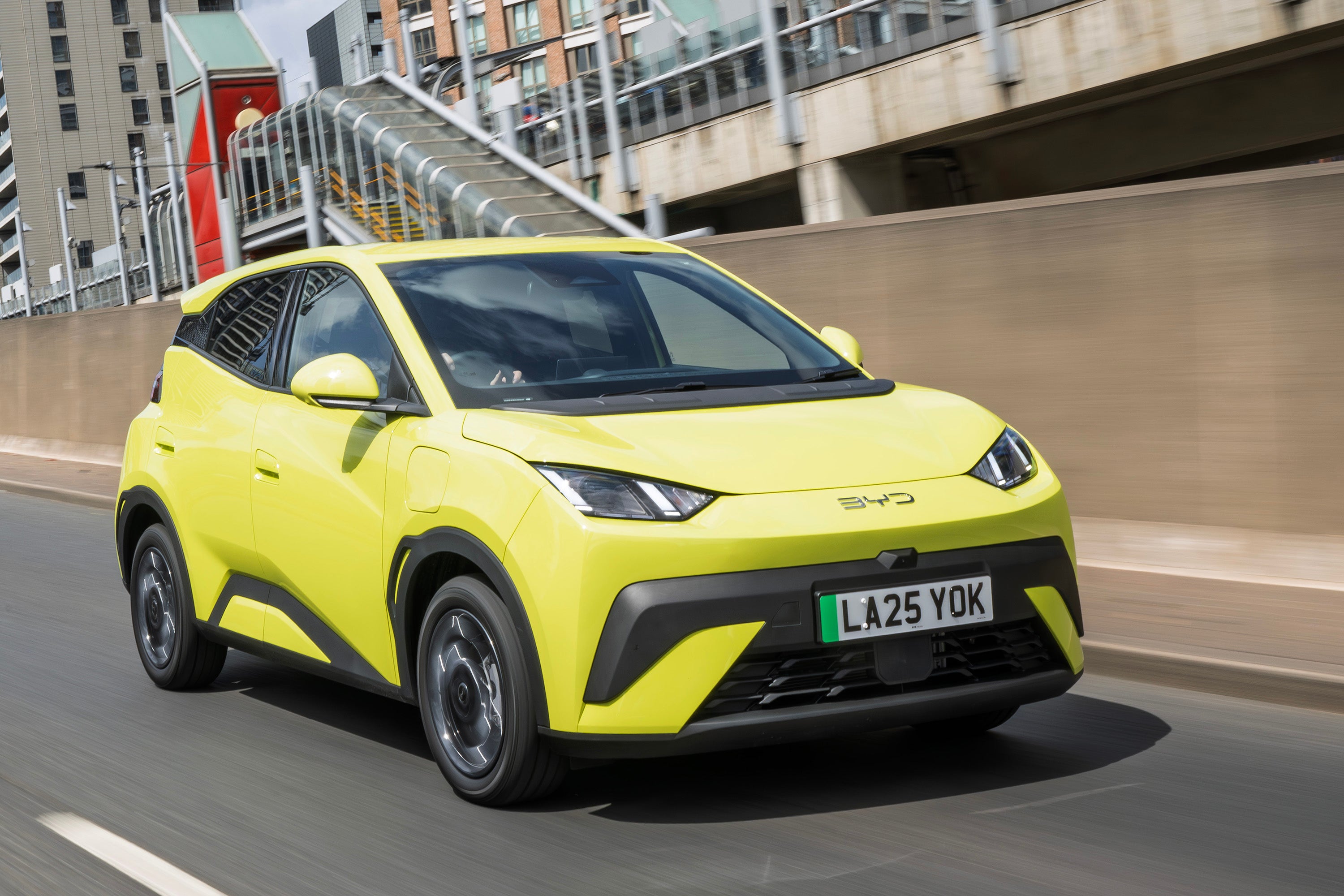BYD Dolphin Surf Review 2025: Price, specs & boot space
Written by Matt Robinson
Quick overview
Pros
- Excellent value
- High-quality interior with classy design
- Very efficient
Cons
- Base model doesn't go far on a charge
- Oddly sluggish off the line
- It's called 'Dolphin Surf'
Verdict: Is the BYD Dolphin Surf a good car?
"Yes, the name is a bit silly, but the BYD Dolphin Surf is impressive, especially considering how cheap yet well-equipped it is. This is probably the best BYD to make it to the UK so far."
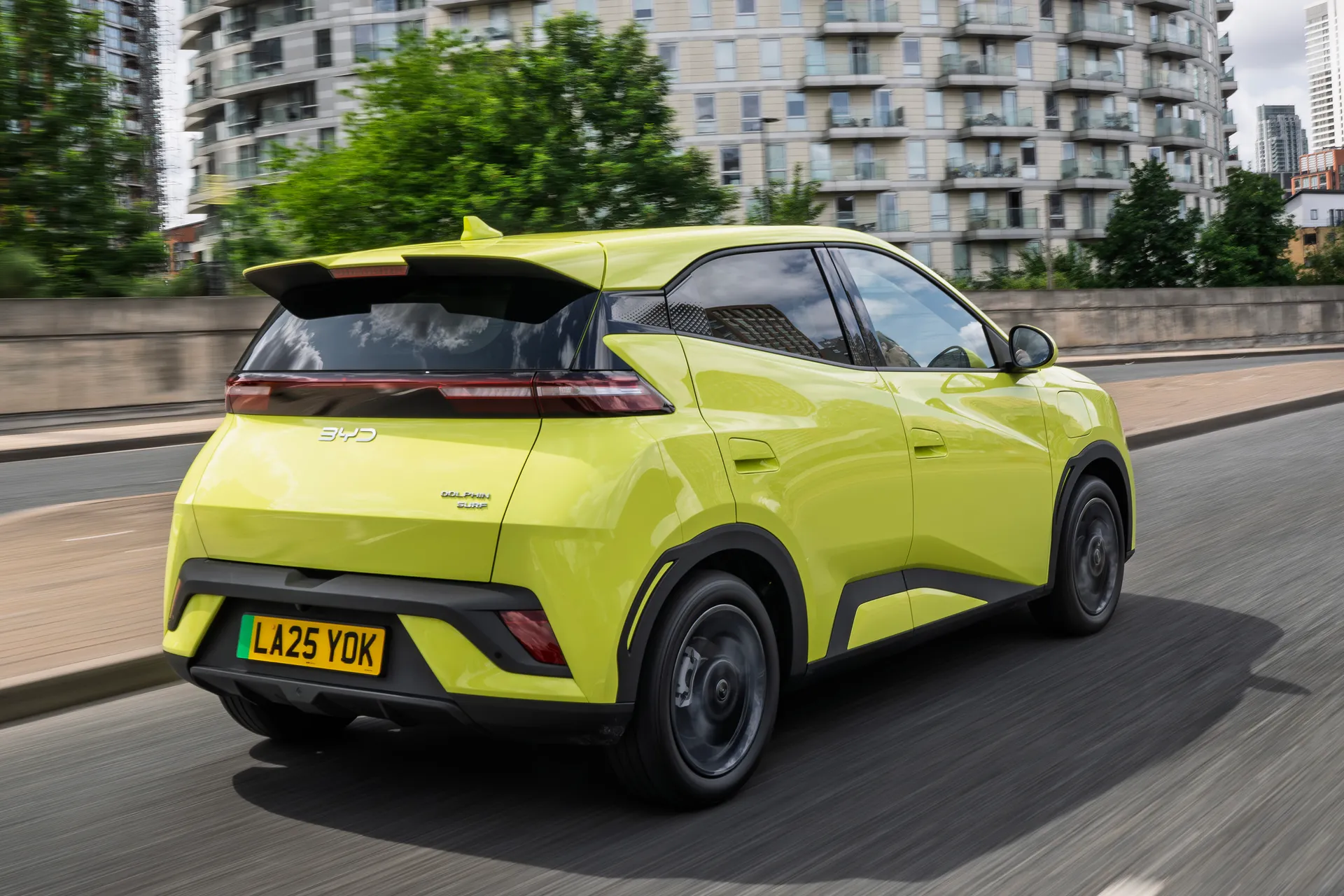
Seal, Sealion 7, Dolphin - the names aren’t getting any better, are they? It’s not much better for the latest in BYD’s ‘ocean series’, the BYD Dolphin Surf, and we can’t help but think this one is a bit confusing as well as naff. Without looking at the car, you might wonder if it’s an offshoot of the Dolphin, but despite sharing a platform, it isn’t. It’s a completely different model that looks nothing like its partial namesake.
In Brazil, it’s called the Dolphin Mini, a name which has landed it in a spot of legal bother with BMW, for hopefully obvious reasons. And so, the car launched here in Europe is the Dolphin Surf, not because ours is designed with people who like riding gnarly barrels for kicks, before you ask. It’s probably a better name to Western ears than the ‘Seagull’, as it’s called in China.
That car, we should note, costs the equivalent of just £6,000 in its native country. You might be wondering why, then, we’re expected to pay the best part of £20,000 for the Dolphin Surf in the UK. It’s far from alone in this regard, though - the Dongfeng EV EX1 Pro is almost identical to a Dacia Spring yet costs only around £7,000, which is £10,000 less than an Extreme-trimmed version of the car here.
That’s the reality of boring things like taxes, shipping and upgrading a car to European-friendly specifications. Actually, £18,650 seems like good value. That’s barely more than the aforementioned Extreme spec Dacia Spring, for a car that has more power, a better standard specification and is less dated. The Dacia is based on a 10-year-old Renault that was never designed for Europe, and it shows.
You can, however, spend quite a bit more than that £18,650 on a Dolphin Surf, with the range-topping Comfort coming in at just under £24,000. We tried the mid-spec Boost, which splits the difference (ish) at just under £22,000.
It’s a bargain basement price, then, undercutting the starting price of the Citroen e-C3 by a fair bit, and the cost of the cheapest Hyundai Inster by even more. Unlike the Dacia, though, it doesn’t feel cheap. The Dolphin Surf has a remarkably grown-up and well-built interior, and even on the basic version, most of the key equipment ‘boxes’ are ticked.
You get a choice of two batteries, giving range figures of 137 and 200 miles, respectively. Judging by the efficiency we managed in the cars, these are figures you might, for once, actually get quite close to in reality. To drive, the Dolphin Surf is unremarkable, but it handles tidily enough and does all it needs to. There are a few foibles, but none are deal-breakers.
From a value-for-money perspective, this might just be BYD’s best car we’ve yet seen.
Is the BYD Dolphin Surf right for you?
If you're after a brand-new EV and price is high on the agenda, absolutely. Yes, you can pay less on something like a Dacia Spring or Leapmotor T03, but there are some quite hefty compromises in doing so. Conversely, you could spend more on a Citroen e-C3, but other than a better-known badge, you're probably not getting much in return for the additional outlay.
Ideally, you'll be driving mostly urban miles, especially if opting for the base Dolphin Surf with its smaller battery. Along with a modest range and a slow recharge rate, the Dolphin Surf also isn't the quietest thing at speed, which could grate on long journeys. That said, the occasional trip up to see relatives shouldn't be too painful, particularly if the bigger battery is specced.
What's the best BYD Dolphin Surf model/battery to choose?
We often recommend swerving the base version of a car, but the Dolphin Surf Active has enough standard kit for most. It all comes down to whether or not you need to extra range. If your Dolphin Surf is to spend almost all its time as an urban runaround, the Active will be more than adequate. It’s quite a big jump in price to the Active, so you’re only going to want to spend the extra if absolutely necessary.
It’s a fairly big hop again to the Comfort, the main benefit of which is a more powerful motor. We can’t say for sure if it’s worth it, having not driven it just yet. The lower output motor is pokey enough, though, we just wish it had a little more zip off the line.
What other cars are similar to the BYD Dolphin Surf?
You might assume the most similar would be the BYD Dolphin. But no. Although the cars share a platform as well as a name (partly), the Dolphin Surf is an entirely different model that's targeting a different bit of the market.
Cheap electric cars include the Dacia Spring and Leapmotor T03, although both are quite a bit smaller than the BYD. The Citroen e-C3 and Fiat Grande Panda Electric are probably the closest rivals, and it's also worth considering a Hyundai Inster if the Dolphin Surf is on your radar.
Comfort and design: BYD Dolphin Surf interior
"The BYD Dolphin Surf's minimalistic cabin looks classy and feels surprisingly premium for the price. We're not sure what the point is in the rotating infotainment screen, however."
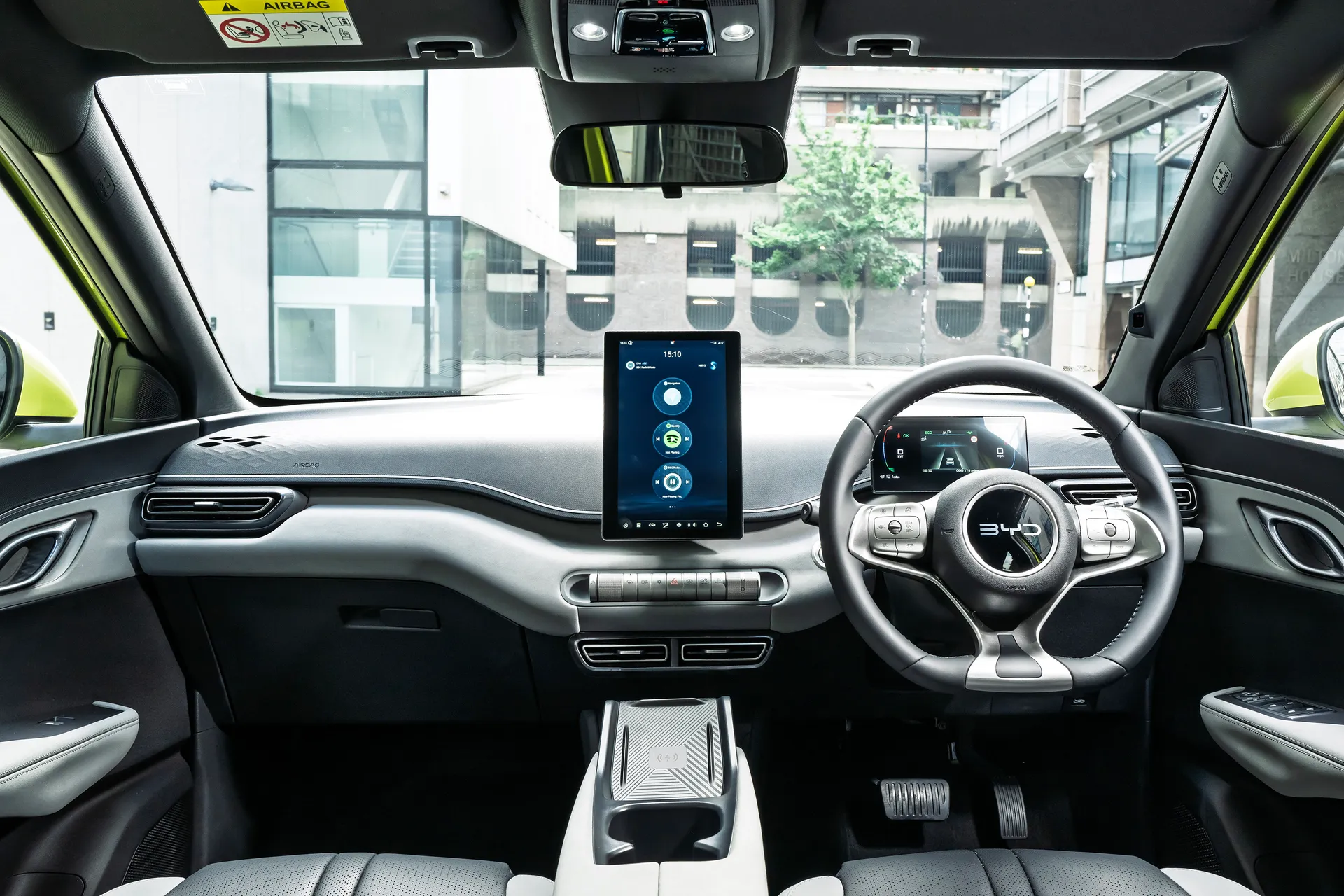
The Dolphin Surf has a stylish, minimalistic dashboard with a bank of unusual switches that form one long, tube shape. There are only a handful of controls here, so you are going to be reliant on the central touchscreen, although there is an assortment of buttons on the steering wheel.
It's generally pretty easy to see out of the front, but those in the rear might not be quite so happy with the super-high windowline. At least they won't be able to retaliate by twanging any 'guitar strings'. The only BYD model to get those is the Atto 3.
The front part of the cabin includes a large central armrest which includes a tray at the end which can be used for your phone. It's possible to spec a wireless charging pad, which includes raised bits to hold your phone in place. In Dolphin Surfs that do without, your phone is free to slide around.
It's a similar complaint with the cupholders under the armrest, which are quite wide and aren't adjustable, so all but the fattest of bottles and coffee cups will move around and possibly spill.
Quality and finish
There's an air of cheapness when you climb aboard most cars costing around the same as the BYD Dolphin Surf, EV and otherwise. It's a pleasant surprise, then, to see that the Surf feels quite premium inside, with a nice blend of different materials, including a light, fabric-covered section of the dashboard.
We'd be a little worried about how good that'd look after a few years and a few thousand miles of use, but generally, the cabin feels like it's built to last. Plus, for once, we don't have to moan about scratch-prone 'piano black' plastic, which is mercifully absent here.
Infotainment: Touchscreen, USB, nav and stereo in the BYD Dolphin Surf
Even though the Dolphin Surf is the cheapest BYD, it doesn't miss out on the company's signature rotating touchscreen infotainment system. We've never really been sure what the point was, though, given that it can't rotate while Android Auto or Apple CarPlay is used, and because all of these screens feel like they work better in landscape mode.
This is especially true of the Dolphin Surf's display, which is more modest in size at 10.9 inches (some BYD models use 15.6-inch screens). Rotating it to portrait, which can be done either by pressing a button or using a voice command, also makes some of the climate icons along the bottom disappear, because there's insufficient space for all of them.
Yep, that's right, you'll need to use the display for the climate controls, which is a faff, particularly as the shortcut buttons for them are quite small. That's a general theme with this display, really. Generally, though, it's fine. It's responsive enough, and although there's the odd bit of lag, we've experienced worse in much more expensive cars.
There's an old-style USB-A socket plus a USB-C in the front, between which is, curiously, a micro SD port. The sound system is perfectly adequate for the price.
Space and practicality: BYD Dolphin Surf boot space
The Dolphin Surf is slightly shorter than a Citroen e-C3, but the boot space is near enough the same at 308 litres. It's not a particularly long boot, but it is quite deep. The rear seats fold flat in a 50/50 arrangement, opening up 1,037 litres of total space. Elsewhere in the cabin, there's 20 litres of storage space split between different areas, including a deep storage tray beneath the front armrest.
Unlike the Citroen but matching the Hyundai Inster, the narrow Dolphin Surf can only seat four. Rear legroom is decent, considering the car's small footprint.
Handling and ride quality: What is the BYD Dolphin Surf like to drive?
"The Dolphin Surf is unremarkable in terms of handling. It's not much fun to drive and could ride better, but it's leagues ahead of a Dacia Spring in this regard. We just wish the motor wasn't as lethargic as a teenager on a Saturday morning."
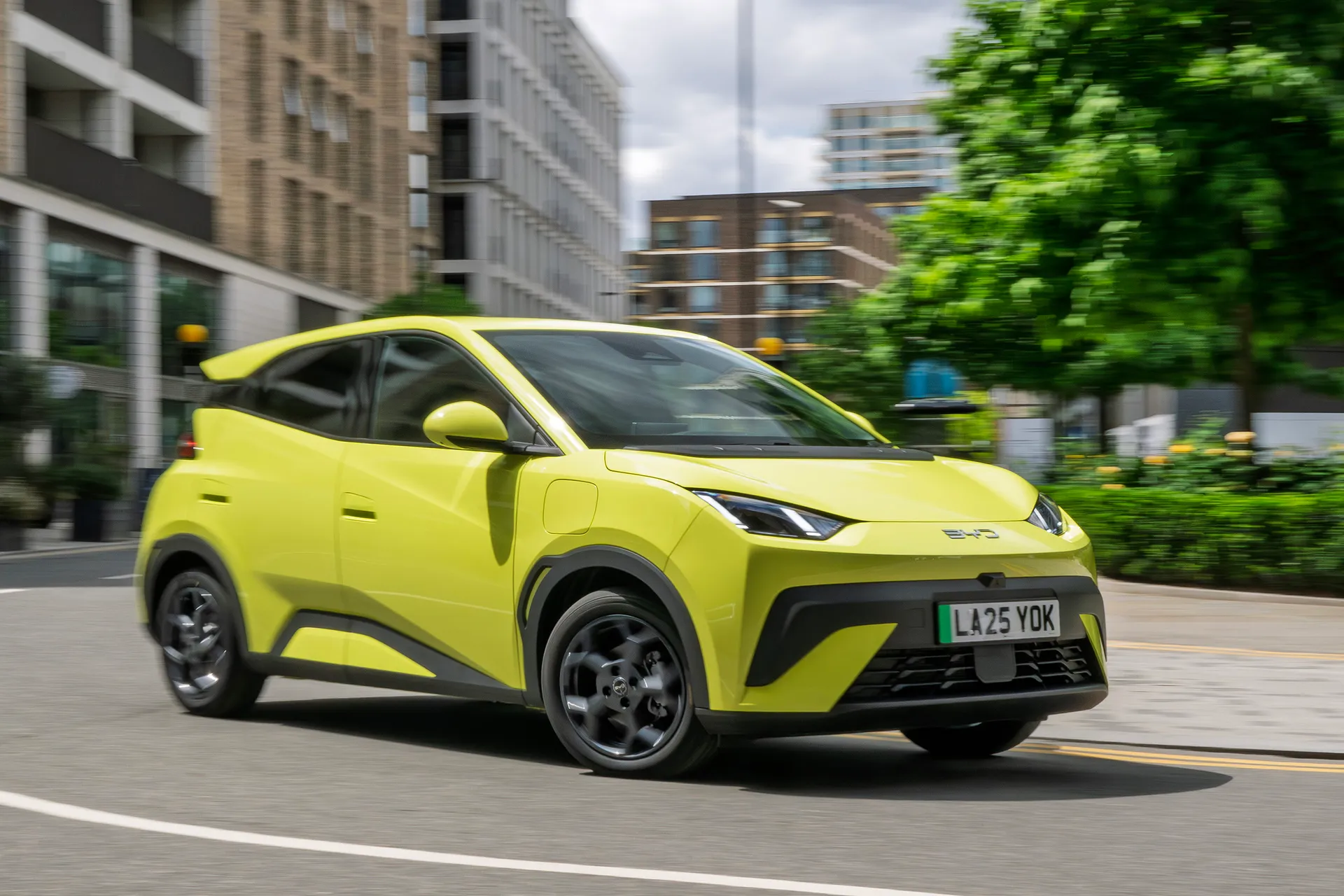
At low speeds, the Dolphin Surf's ride can get a little choppy, and the suspension can feel overwhelmed by larger speed bumps and particularly big imperfections in the road surface. It's not too uncomfortable, though, and things do mostly settle at speed.
The steering is strangely slow, but perhaps that's for the best. Corner too quickly and the Dolphin Surf will start to lean, but not dramatically so.
Further demonstrating that things are quite basic on the chassis front, a lot of acceleration while you're cornering can lead to the front tyres squealing in protest, even on the lower-powered version of the Dolphin Surf we tried.
Although it's nothing to do with the handling, the Dolphin Surf's narrowness makes fitting through tight gaps a breeze.
What motors and batteries are available in the BYD Dolphin Surf?
There are two motors and two battery sizes available, but only three possible combinations of them. The base spec battery is 30kWh, and can only be combined with an 88PS, 175Nm motor. The 43.2kWh can be combined with that same 88PS motor, or if preferred, a more potent one putting out 156PS and 220Nm.
Our only experience thus far has been with the Boost. By combining a larger and therefore heavier battery with the least powerful motor, it’s inevitably the slowest Dolphin Surf, managing 0-62mph in 12.1 seconds.
We don't normally pay much attention to the 0-62mph times of cheap, low-powered EVs, because the instantaneous availability of their full torque figures usually means they're quite enthusiastic off the line and up to 30mph. In a city-focused car like the Dolphin Surf, that's much more important.
However, the Surf is weirdly lethargic off the line. It feels like it takes an age for the motor's full output to arrive and the car to actually get going at any real pace. And if you are accelerating up to 60mph, it never feels like in a particular hurry. The lighter base version won't be much better, managing 0-62mph in 11.1 seconds.
s
The Comfort should feel quite a bit peppier - it does the same in 9.1 seconds. If you're likely to be taking your Dolphin Surf out of town a lot, it's likely the one to go for.
BYD Dolphin Surf range: How far can you travel on a charge?
The range of the smaller-battery model is, as you’d expect, fairly limited at just 137 miles. The cheaper Dacia Spring can go further (albeit only three miles) according to the official number. Efficiency is good, though, with our test car showing over five miles per kWh, so for once, you actually stand a decent chance of replicating the WLTP figures away from a lab. For the bigger battery, it’s 200 miles in the Boost version, with the Comfort dropping to 193 miles due to its larger motor.
Refinement and noise levels
At this price, something usually has to give, and in the case of the BYD, one of the ‘somethings’ is the noise levels. Get it up to 50mph and beyond, and there’s quite a lot of wind noise, although you don’t get so much from the tyres, probably because their footprints are so small. We can’t single out the Dolphin Surf for this, though, when the Citroen e-C3 and Fiat Grande Panda Electric also get a bit rowdy at cruising speeds. The Hyundai Inster isn’t a whole lot better, either.
Safety equipment: How safe is the BYD Dolphin Surf?
There’s no Euro NCAP rating for the Dolphin Surf just yet. The Dolphin achieved the full five-star rating when assessed in 2023, which might give some comfort, given that it uses the same platform, but it’s no guarantee the Suf will manage the same, especially because it’s a smaller car.
You get plenty of safety systems as standard. All versions have automatic emergency braking, speed limit recognition, lane-keeping assistance, and a driver alertness monitor. The final item isn’t great, though. Several times during our test drive, the car would angrily tell you, “eyes on the road,” even when they very much were.
BYD Dolphin Surf charging times: How much does it cost to charge?
"Excellent efficiency and low insurance groups should make the Dolphin Surf very cheap to run."
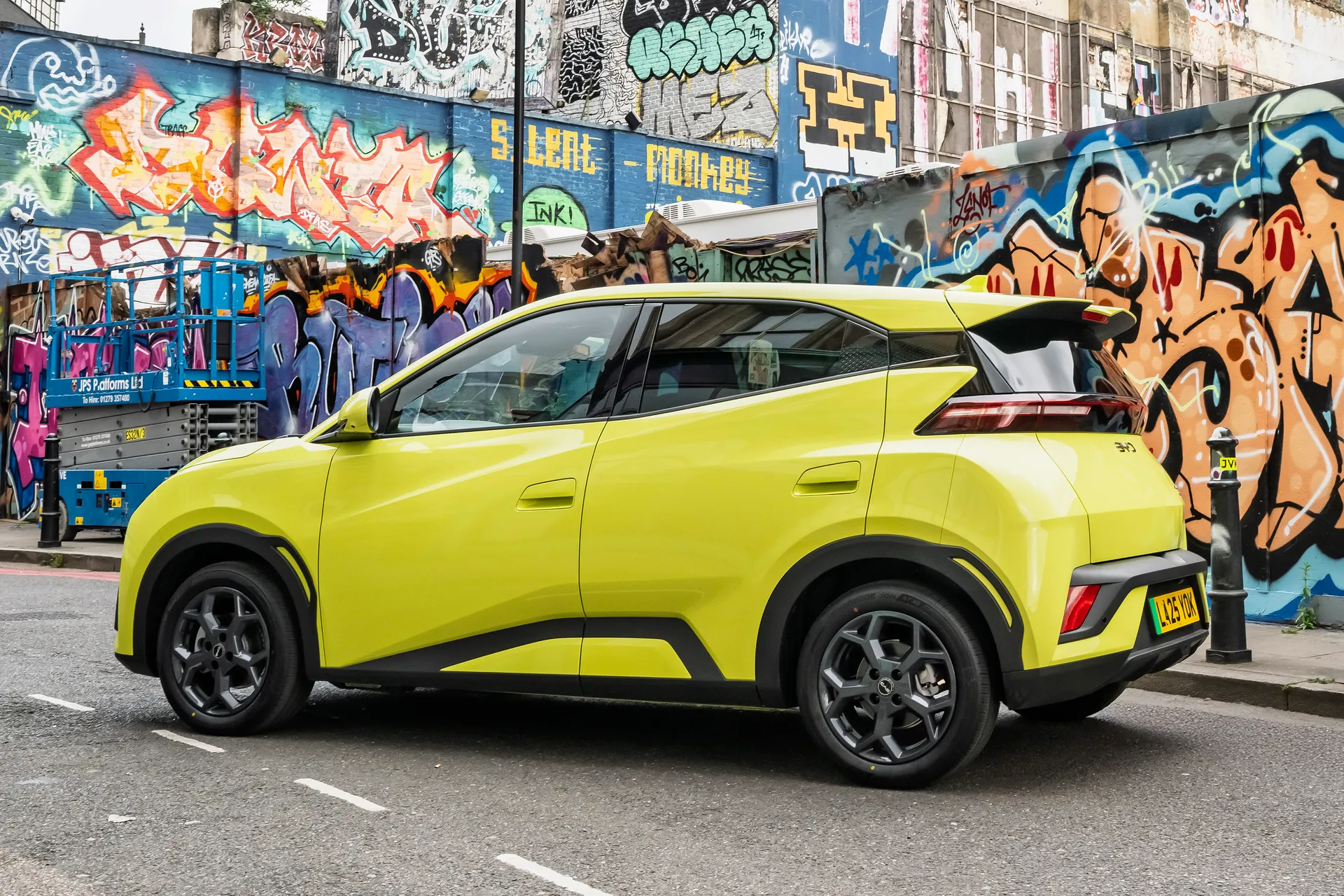
The recharging rates are nothing to write home about, with the smaller battery able to take up to 65kWh and the larger one 85kWh. Mind you, as neither battery option is particularly big, you shouldn’t ever be hanging around for that long for a top-up. BYD quotes 30 minutes to take both batteries from 10% to 80%.
Taking the smaller battery from flat to full should take about four hours using a 7.4kWh from a home wallbox, with the bigger one taking more like six hours. It’ll be about three times that if using a three-pin plug, something best avoided, not just because of the glacial recharge rate, but also because it might not be great for your home’s electrical system.
Based on the average UK tariff, it’ll be about £7.50 to fully charge the 30kWh battery from empty, and just over £10 for the 43.2kWh version. Ideally, though, you’ll be on a tariff that gives a lower unit cost at certain times of day (usually overnight), allowing for super-low running costs.
BYD Dolphin Surf reliability and warranty
It's too early to judge how the Dolphin might fare in terms of long-term reliability, but it likely helps that it's an EV. Fewer moving parts means there's less to go wrong, after all.
In terms of warranty, you get six years or up to 93,750 miles of coverage, with the battery covered for eight years and the same mileage.
BYD Dolphin Surf insurance groups and costs
The Dolphin Surf Active and Boost models each sit in insurance group 14A, while the Comfort is in 19D.
VED car tax: What is the annual road tax on a BYD Dolphin Surf?
Unfortunately, EVs no longer escape paying Vehicle Excise Duty (VED), so from year two onwards, you’ll have to cough up the same £195 as drivers of any other kind of car.
BYD Dolphin Surf price
“We’d been hoping for the BYD Dolphin Surf to sneak under the £20,000 mark when it arrived in the UK. In fact, it’s managed this with plenty of breathing room.”
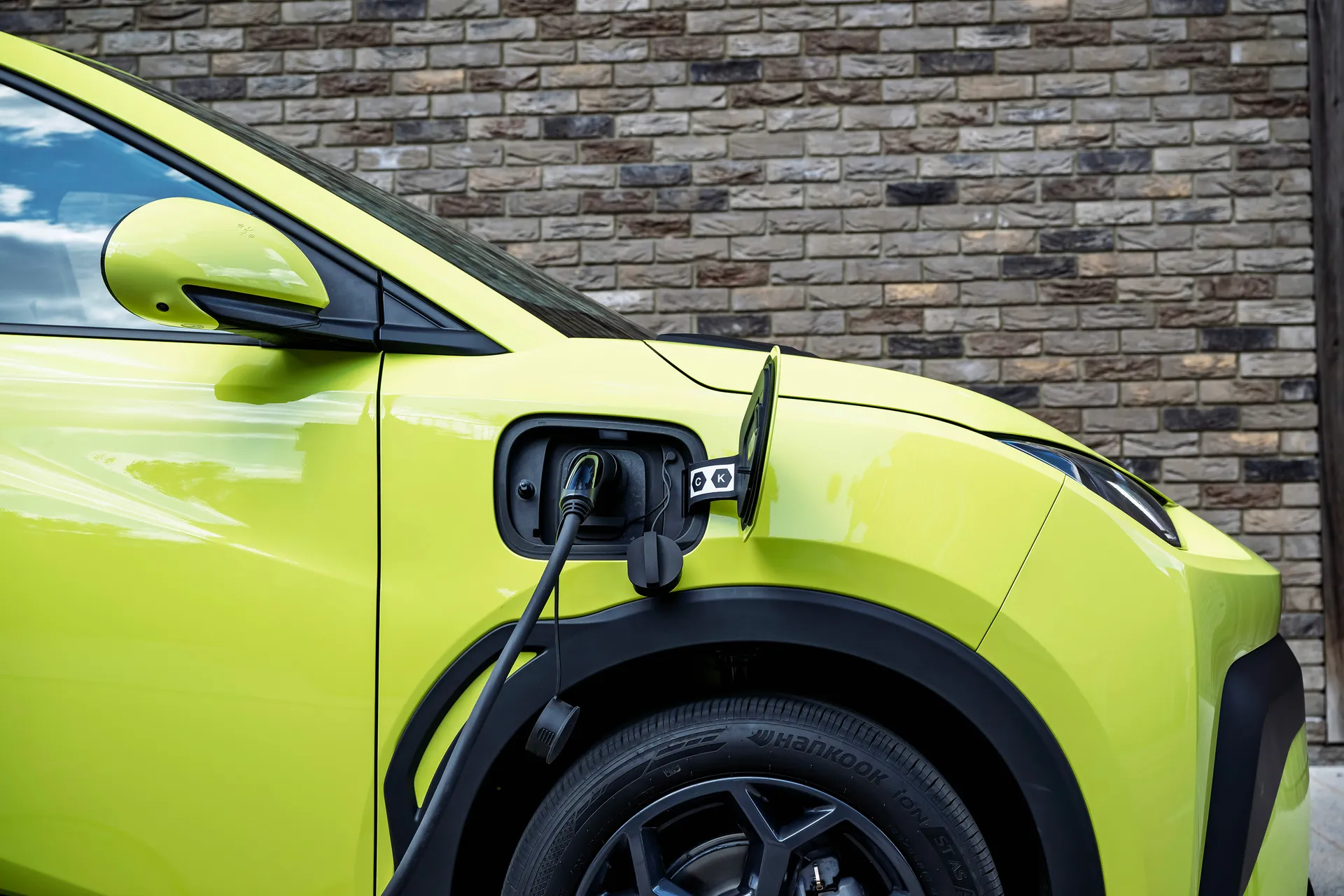
The cheapest Dolphin Surf is the £18,650 Active. £21,950 upgrades you to the Boost, which features the same motor but a longe-range battery. Finally, Comfort pairs that same larger pack with a more powerful motor for £23,950.
This places the Surf somewhere between the cheapest EVs, the Dacia Spring (from £14,995) and Leapmotor T03 (from £15,995), and the huge Stellantis group’s two budget EVs the Fiat Grande Panda Electric (£21k+) and Citroen e-C3 (£22k+). There is a bit of overlap between the latter two and the Surf once you start looking at the higher spec versions of the Surf, while the range-topping Comfort is a bit more than an entry-level Hyundai Inster.
Really, though, you want to spend at least £26,745 on an Inster to get the version with the clever flexible seating arrangement, which is one of the best things about the car.
Trim levels and standard equipment
All versions of the Dolphin Surf are well equipped, with the base Active ticking all the major boxes, including a 10.1-inch infotainment system, electrically adjustable and heated wing mirrors, artificial leather seats, air conditioning, rear parking sensors with a reversing camera and adaptive cruise control.
Boost includes all of the above plus a larger battery pack, 16-inch alloy wheels, electrically adjustable front seats, electrically folding door mirrors and rain-sensing wipers. Finally, the range-topping Comfort adds a more powerful motor, a 360-degree camera, LED headlights, tinted rear windows, puddle lights, heated front seats and a wireless smartphone charging pad.
Ask the heycar experts: common questions
Can you buy a BYD Dolphin Surf in the UK?
Are BYD cars better than Tesla?
Is a BYD Dolphin Surf a version of the Dolphin?
Get our latest advice, news and offers
Keep me updated by email with the latest advice, news and offers from heycar.
By submitting you agree to our privacy policy
